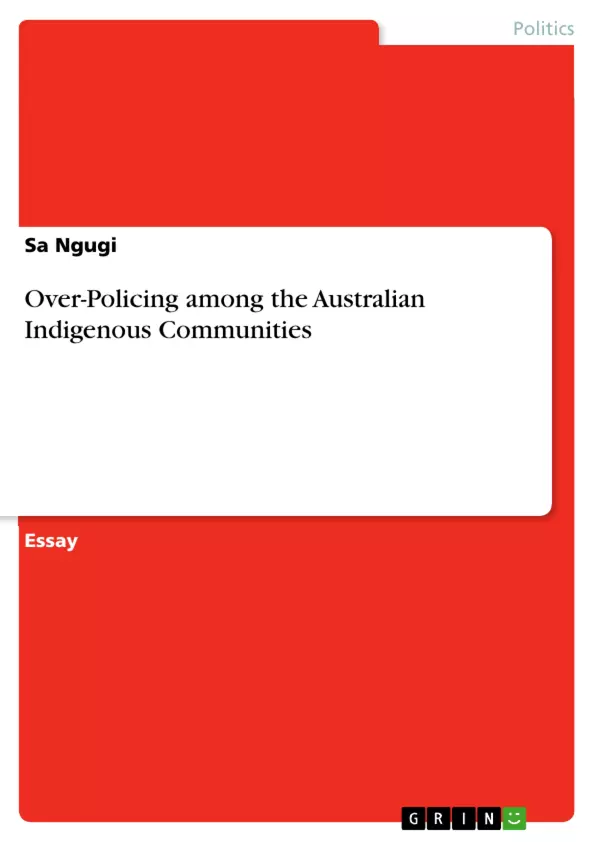Aboriginal Australians in prisons and courts are grossly over-represented. There have been financial, consultative, and democratic efforts geared towards addressing the issue not only by the Federal Government but also the State. However, despite the efforts to probe on this itching issue for years, no changes have been successfully established. According to Gosford (2011 p1), in the Northern Territory, most youths in custody have been remanded. In a broad view, the problem arises from disrupted work opportunities, cultural and education opportunities, stigmatization, community and family fracture, and social isolation.
Table of Contents
- Over-Policing among the Australian Indigenous Communities
- Over-Representation of Indigenous People within the Criminal Justice System
- Over-representation Issue: Complexities and Causes
- Historical Disadvantage and Over-Representation
- Indirect Racial Discrimination and Over-Representation
- Over-Policing and Indigenous Incarceration Rates
- Institutional Racism and Over-Policing
- Constitution and Racial Discrimination
- Policing, Aborigines, and Over-Representation
- Over-Policing, Oppression, and Socio-economic Marginalization
- Funding and Programs: Addressing Over-Representation
- Victimization and Recidivism Rates
- Police Diversion and Indigenous Offenders
Objectives and Key Themes
This essay examines the over-representation of Indigenous Australians in the criminal justice system, focusing on the role of over-policing within Indigenous communities. It investigates the interplay of historical, political, societal, and economic factors contributing to this issue.
- Over-representation of Indigenous Australians in the criminal justice system
- Over-policing practices targeting Indigenous communities
- Historical and systemic discrimination against Indigenous Australians
- Socioeconomic factors contributing to Indigenous disadvantage
- The impact of police discretion and bias on Indigenous offenders
Chapter Summaries
The essay begins by outlining the over-representation of Indigenous Australians in prisons and courts, highlighting the lack of significant progress despite government efforts. It then explores the statistics and historical context of Indigenous over-representation, particularly in the context of the Royal Commission into Aboriginal Deaths in Custody.
The essay delves into the complexities of the over-representation issue, considering factors such as socioeconomic marginalization, historical colonization, and institutional racism. It examines the role of indirect racial discrimination within the criminal justice system, particularly in the context of police discretion and diversion programs.
The essay further explores the impact of over-policing on Indigenous communities, analyzing the role of police presence in remote areas, the application of discretion by police officers, and the potential for racial bias. It examines the historical perspectives on policing and Indigenous communities, highlighting the legacy of colonial attitudes and practices.
The essay concludes by discussing the funding and programs designed to address Indigenous disadvantage, while acknowledging the limitations and challenges associated with these initiatives. It analyzes the broader context of victimization and recidivism rates, emphasizing the need for a systemic shift in addressing Indigenous over-representation.
Keywords
The essay explores themes such as Indigenous over-representation, over-policing, institutional racism, socioeconomic disadvantage, police discretion, diversion programs, racial discrimination, and the Australian criminal justice system.
- Quote paper
- Sa Ngugi (Author), 2016, Over-Policing among the Australian Indigenous Communities, Munich, GRIN Verlag, https://www.grin.com/document/334447



